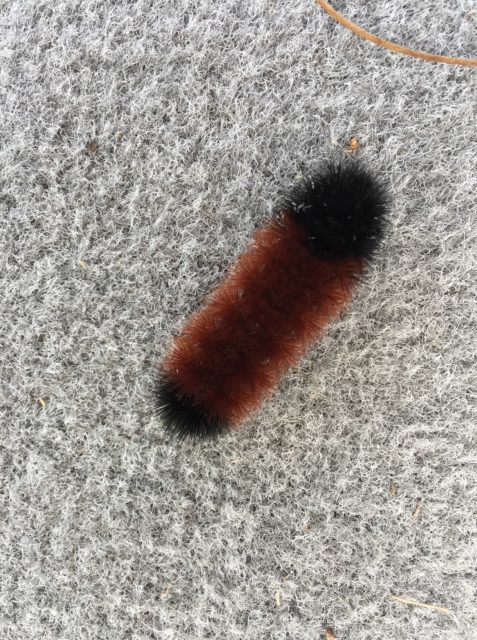
You see them this time of year, especially in rural areas, scampering across roads and trails. Rusty brown, black, and fuzzy like wool, their direction of travel is the only way to tell their head from their rear. Here in the south, they’re known to most as a “woolly worm.” They’re also called a “woolly bear.” Whatever you call them, they’re the larva for the Isabella tiger moth. And folklore says they can predict the winter.
How, you say? A little history helps.
Starting in 1948, Dr. C.H. Curran – the curator of the American Museum of Natural History in New York – spent several years catching and averaging the ratio of brown to red and comparing it to the winters. He determined that there might be some truth to the fuzzy, inch-long caterpillar’s forecasting prowess. Curran determined that the more black color, the more severe the winter. More brown, more mild. He told a reporter friend at the New York Herald Tribune about his findings and a story went viral. Woolly worms became hugely popular.
Festivals are held in October in places like Banner Elk, North Carolina, and Vermilion, Ohio.
So is there any truth to the story or is it more myth? Scientists have studied the matter using more modern technology and have determined it’s just folklore. Still, many believe it’s true.
I live out in the country and so far this year I have found all black ones (we’re all gonna die from snow and cold) to all brown ones (we might be hitting the beach instead of freezing to death). I even found one that was all light tan (no clue what that is supposed to predict).
The one in the picture was crossing my street in the middle of nowhere and I picked it up for a photo. It has more rusty brown in the middle with black tips on both ends. So if there is anything to make of the woolly worm folklore, this should be a relatively easy winter to deal with.
The National Weather Service in Wakefield on Dec. 8 will be making their predictions based on computer models and other tools at their disposal. We’ll see who gets it right.
To follow some of my other work, go to: www.leetolliveroutdoors.com



